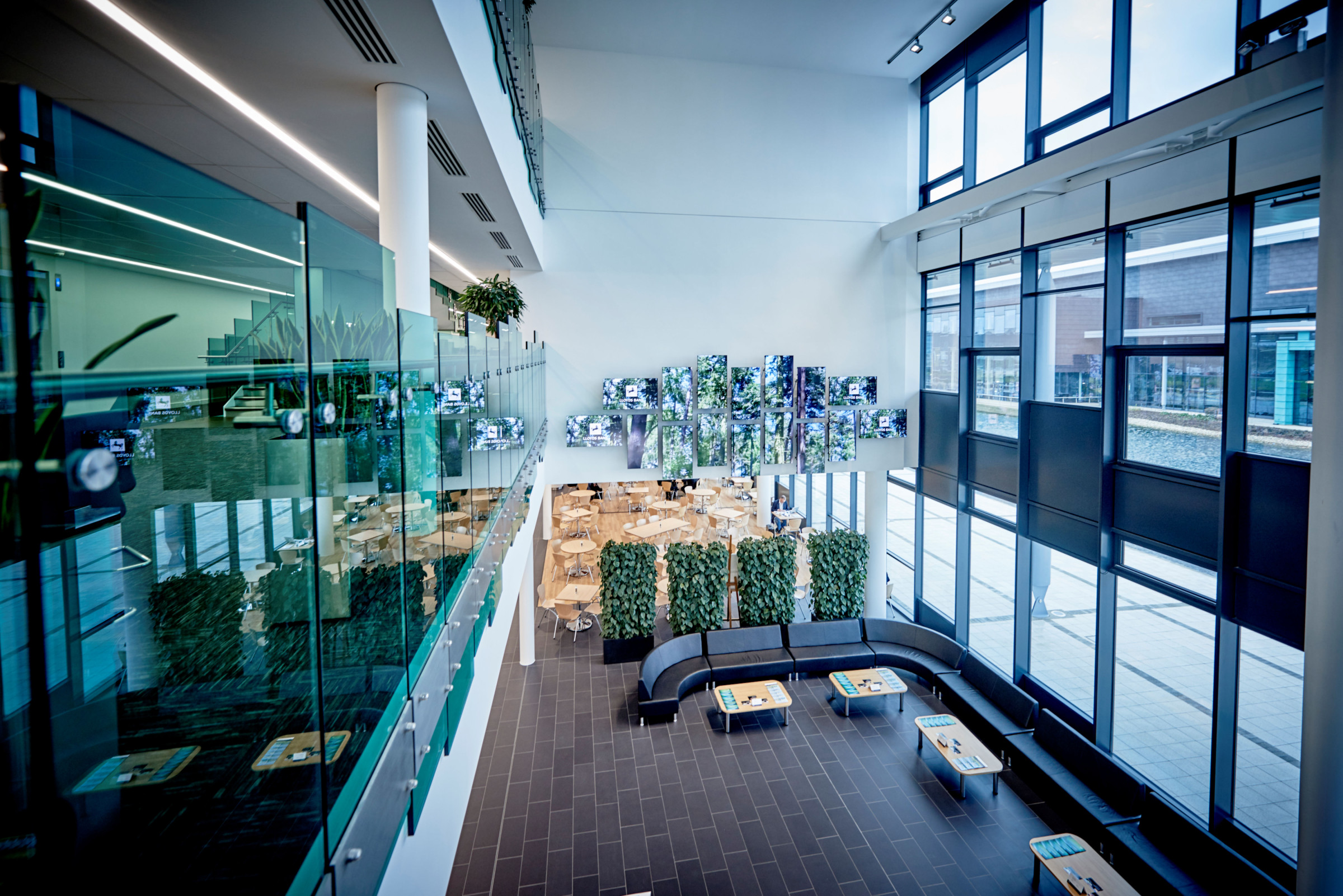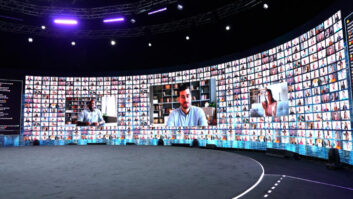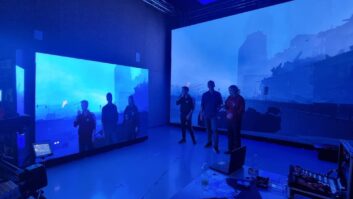
Having previously looked at the impact of the increasing number of manufacturers from a broadcast background moving into the AV industry, before considering the benefits this presents for corporate customers. David Davies concludes by revealing where the corporate market currently stands on the topics of advanced displays and transitioning to IP.
On the display front, Luke Mahler-Hausen, AV and live business development, EMEA, Blackmagic Design recognises that “there’s a lot of movement in the market towards advanced displays, whether that’s 4K laser projectors or LED screens for IMAG [image magnification]. The ability to deliver 4K over a single SDI cable is a definite advantage here, not least because of its simplicity. Not only does it remove unnecessary weight and cost, it also reduces any potential risk of image degradation. And while SDI remains the backbone of these AV systems, many rely on optical fibre to link the various positions around a business; converting digital HD from copper to fibre to push the signals over hundreds of metres.”
Andy Fliss, vice president sales and marketing at tvONE also acknowledges the popularity of the UHD displays with reference to tvONE’s own CORIOgrapher control software. “The new generation of large-format 4K displays can be treated as a digital canvas, presenting multiple high-quality images or videos simultaneously,” he says. “One large 4K screen, for example, can be split to present four 1080p images simultaneously. The latest release of the CORIOgrapher control software offers creative source and transition effects that can be applied to individual windows or multiple windows at the same time. These features are impressive in the lobby for image building, but equally valuable in the boardroom. Images of a presenter, a PowerPoint presentation and an Excel spreadsheet can be delivered with absolute clarity on a single screen to support an international meeting.”
For Adder, technology strategic sales manager EMEA, Jamie Adkin says that there is a shift towards “more content that is 4K-produced and edited, but not necessarily viewed on 4K displays at this stage. But I expect that will change over time.”
Planning and purpose
With the timetable for the mass transition towards IP still uncertain, and the likelihood that corporate customers will need to accommodate a wide variety of inputs for the foreseeable future, flexible and future-proofed systems will be much in demand. But expert guidance from consultants, integrators and vendors will also be a prerequisite – not least because, inevitably, the level of knowledge and preparedness on the part of clients will continue to vary significantly. The same can be said of the question of whether new video systems are implemented in phases or as part of a single large-scale installation.
It is Fliss’ observation that “most consultant-driven installations still proceed a few rooms at a time, which is fine provided the backbone network is sufficiently high bandwidth to support the increasing traffic. The format, compression and resolution of the content can easily be changed for a relatively limited investment simply by swapping out the source and the screen, but recabling a site is expensive. Truthfully, we don’t know what technologies will come down the pipe. Will 8K take off or not? AVB is attracting a lot of positive interest…”
It is through the adoption of fibre now, says Fliss, that the greatest long-term capability can be attained. “While a dedicated 10Gb network configured for video can be enough for now, only fibre optic networks really reach into the future. Pull fibre today and you will be ready for any conceivable video standard and application tomorrow and the day after.”
For James Keen, marketing manager at Tripleplay, adequate planning should allow for a phased approach to be taken – but the basic groundwork has to be correct. “Proper planning will allow any large corporate to expand its technology solution as and when demand changes, grows or shrinks,” he says. “Understanding the limitations of the solutions you’re looking at helps to decide which technology to implement initially. Some technologies are very ‘black box’ based and require sizeable hardware investments to add features when they are released, whereas we offer a software platform, so new features are easily applied to existing solutions. If you make the correct decision on day one you should have no problems expanding the system on day 1,000; it’s making sure you make the right call initially that matters.”
But while Keen feels that in the main corporate IT and AV teams are “very astute [and] on the button with new release technologies and trends”, not everyone agrees that corporate knowledge of pro-AV is now pitched at a high level.
“Sadly, the level of awareness and training is flagging and can really have detrimental effects,” says Mahler-Hausen. “I’ve seen a very definite split in those installations that have been built with consideration and understanding of what a customer needs, and those which have the right products but have been poorly installed through a lack of thorough knowledge about how the equipment will be used long term.”
More markets
While it is arguably the corporate market above all others that has driven the expansion of broadcast-led manufacturers into traditional AV, the next few years will surely herald more opportunities in other markets. In particular, the obvious appeal of 4K to critical applications in the healthcare sector, as well as oil and gas production, should open up lucrative avenues for vendors leading the way in the new format.
“The use of more professional tools as well as the broader acceptance of Ethernet and IP-type technology has really underpinned the whole convergence taking place – one that is affecting broadcast as much as the broadcast industry affects it,” says Bryce Button, product marketing manager at AJA Video Systems. “The opportunities that arise from that convergence will continue to grow in the years ahead.”
www.adder.com
www.aja.com
www.blackmagicdesign.com
www.tripleplay-services.com
www.tvone.com







